Observations explore the nature of infrared source IRAS 07253-2001
Updated: 2023-07-31 14:40:01
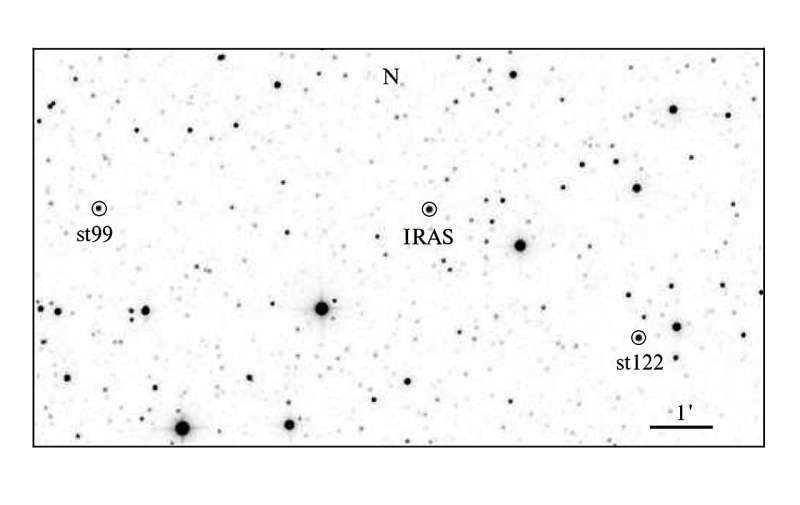 Using the Caucasian Mountain Observatory (CMO), Russian astronomers have observed a peculiar infrared source designated IRAS 07253-2001. Results of the observational campaign, published July 20 on the preprint server arXiv, reveal insights into the properties of this source, shedding more light on its nature.
Using the Caucasian Mountain Observatory (CMO), Russian astronomers have observed a peculiar infrared source designated IRAS 07253-2001. Results of the observational campaign, published July 20 on the preprint server arXiv, reveal insights into the properties of this source, shedding more light on its nature.
 Skip to content Universe Today Space and astronomy news Menu Videos Newsletter Podcast Contact Us Support Us Log in Image of a 3D-printed circuit on display during the Goddard Field Day event that launched on the Suborbital Technology Experiment Carrier-9 SubTEC-9 technology test flight from NASA's Wallops Flight Facility in April 2023. Credit : NASA Karl B . Hille Posted on July 30, 2023 July 31, 2023 by Laurence Tognetti NASA is Working on Technology to 3D Print Circuits in Space A collaboration of engineers from NASA and academia recently tested hybrid printed electronic circuits near the edge of space , also known as the Kà rmà n line The space-readiness test was demonstrated on the Suborbital Technology Experiment Carrier-9 or SubTEC-9 sounding rocket mission , which was launched from
Skip to content Universe Today Space and astronomy news Menu Videos Newsletter Podcast Contact Us Support Us Log in Image of a 3D-printed circuit on display during the Goddard Field Day event that launched on the Suborbital Technology Experiment Carrier-9 SubTEC-9 technology test flight from NASA's Wallops Flight Facility in April 2023. Credit : NASA Karl B . Hille Posted on July 30, 2023 July 31, 2023 by Laurence Tognetti NASA is Working on Technology to 3D Print Circuits in Space A collaboration of engineers from NASA and academia recently tested hybrid printed electronic circuits near the edge of space , also known as the Kà rmà n line The space-readiness test was demonstrated on the Suborbital Technology Experiment Carrier-9 or SubTEC-9 sounding rocket mission , which was launched from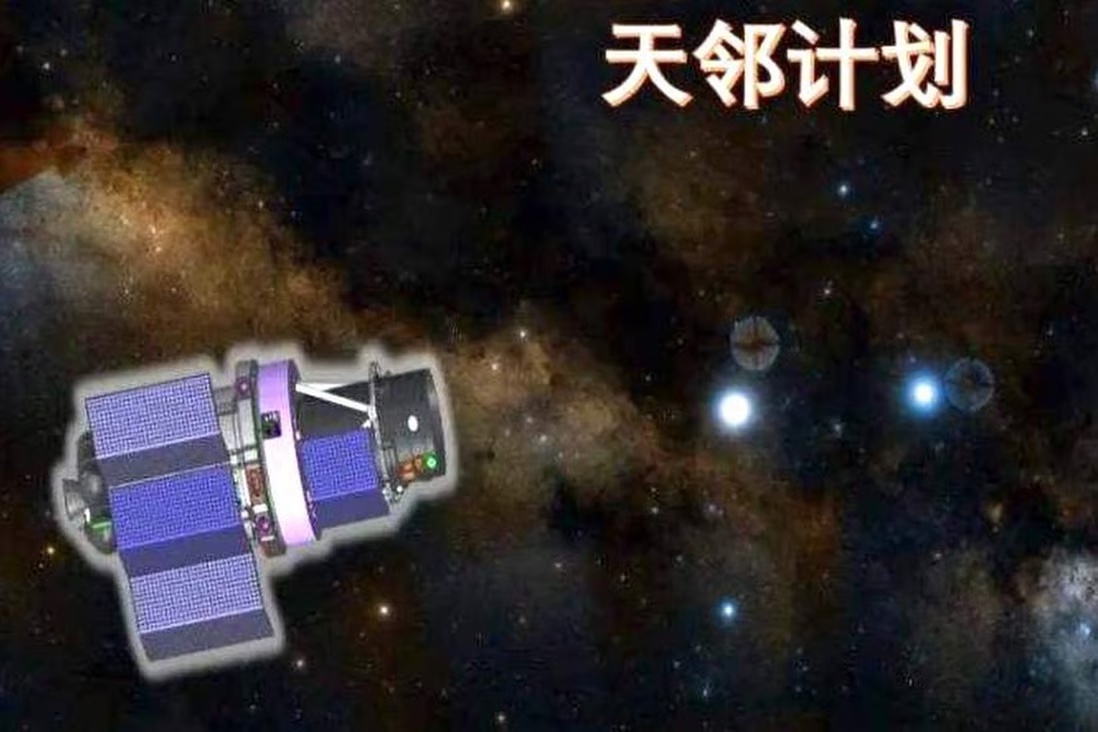 Skip to content Universe Today Space and astronomy news Menu Videos Newsletter Podcast Contact Us Support Us Log in Illustration of the proposed Tainlin Spacecraft . Credit : CNSA Posted on July 29, 2023 July 29, 2023 by Brian Koberlein Chinese Scientists Complete a Concept Study for a 6-Meter Space Telescope to Find Habitable Exoplanets We have discovered more than 5,400 planets in the universe . These worlds range from hot jovians that closely orbit their star to warm ocean worlds to cold gas giants . While we know they are there , we don’t know much about them . Characteristics such as mass and size are fairly straightforward to measure , but other properties such as temperature and atmospheric composition are more difficult . So the next generation of telescopes will try to capture
Skip to content Universe Today Space and astronomy news Menu Videos Newsletter Podcast Contact Us Support Us Log in Illustration of the proposed Tainlin Spacecraft . Credit : CNSA Posted on July 29, 2023 July 29, 2023 by Brian Koberlein Chinese Scientists Complete a Concept Study for a 6-Meter Space Telescope to Find Habitable Exoplanets We have discovered more than 5,400 planets in the universe . These worlds range from hot jovians that closely orbit their star to warm ocean worlds to cold gas giants . While we know they are there , we don’t know much about them . Characteristics such as mass and size are fairly straightforward to measure , but other properties such as temperature and atmospheric composition are more difficult . So the next generation of telescopes will try to capture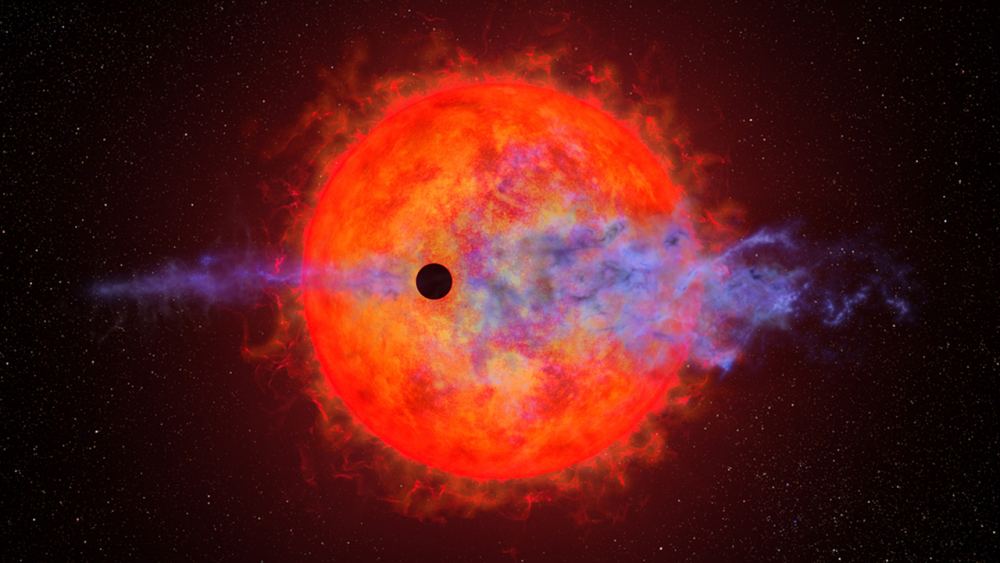 Skip to content Universe Today Space and astronomy news Menu Videos Newsletter Podcast Contact Us Support Us Log in This artist's illustration shows a planet dark silhouette passing in front of the red dwarf star AU Microscopii . The planet is so close to the eruptive star a ferocious blast of stellar wind and blistering ultraviolet radiation is heating the planet's hydrogen atmosphere , causing it to escape into space . The illustration is based on measurements made by the Hubble Space Telescope . Credits : NASA , ESA , and Joseph Olmsted STScI Posted on July 29, 2023 July 29, 2023 by Carolyn Collins Petersen Astronomers are Watching a Planet Get its Atmosphere Blasted Away into Space What do you get when a hot young world orbits a wildly unstable young red dwarf For AU Microsopii b , the
Skip to content Universe Today Space and astronomy news Menu Videos Newsletter Podcast Contact Us Support Us Log in This artist's illustration shows a planet dark silhouette passing in front of the red dwarf star AU Microscopii . The planet is so close to the eruptive star a ferocious blast of stellar wind and blistering ultraviolet radiation is heating the planet's hydrogen atmosphere , causing it to escape into space . The illustration is based on measurements made by the Hubble Space Telescope . Credits : NASA , ESA , and Joseph Olmsted STScI Posted on July 29, 2023 July 29, 2023 by Carolyn Collins Petersen Astronomers are Watching a Planet Get its Atmosphere Blasted Away into Space What do you get when a hot young world orbits a wildly unstable young red dwarf For AU Microsopii b , the Skip to content Universe Today Space and astronomy news Menu Videos Newsletter Podcast Contact Us Support Us Log in The NASA ESA CSA James Webb Space Telescope has captured a high-resolution image of a tightly bound pair of actively forming binary stars , known as Herbig-Haro 46 47, in near-infrared light . NASA , ESA , CSA , J . DePasquale STScI CC BY-SA 3.0 IGO Posted on July 28, 2023 July 28, 2023 by Carolyn Collins Petersen JWST Pierces Through a Thick Nebula to Reveal Newly Forming Binary Stars In 1985, the physicist Heinz Pagels wrote that star birth was a veiled and secret event . 8221 That’s because the stellar crêches hide the action . But , ever since the advent of infrared astronomy , astronomers have been able to lift that veil . In particular , the Hubble Space Telescope has
Skip to content Universe Today Space and astronomy news Menu Videos Newsletter Podcast Contact Us Support Us Log in The NASA ESA CSA James Webb Space Telescope has captured a high-resolution image of a tightly bound pair of actively forming binary stars , known as Herbig-Haro 46 47, in near-infrared light . NASA , ESA , CSA , J . DePasquale STScI CC BY-SA 3.0 IGO Posted on July 28, 2023 July 28, 2023 by Carolyn Collins Petersen JWST Pierces Through a Thick Nebula to Reveal Newly Forming Binary Stars In 1985, the physicist Heinz Pagels wrote that star birth was a veiled and secret event . 8221 That’s because the stellar crêches hide the action . But , ever since the advent of infrared astronomy , astronomers have been able to lift that veil . In particular , the Hubble Space Telescope has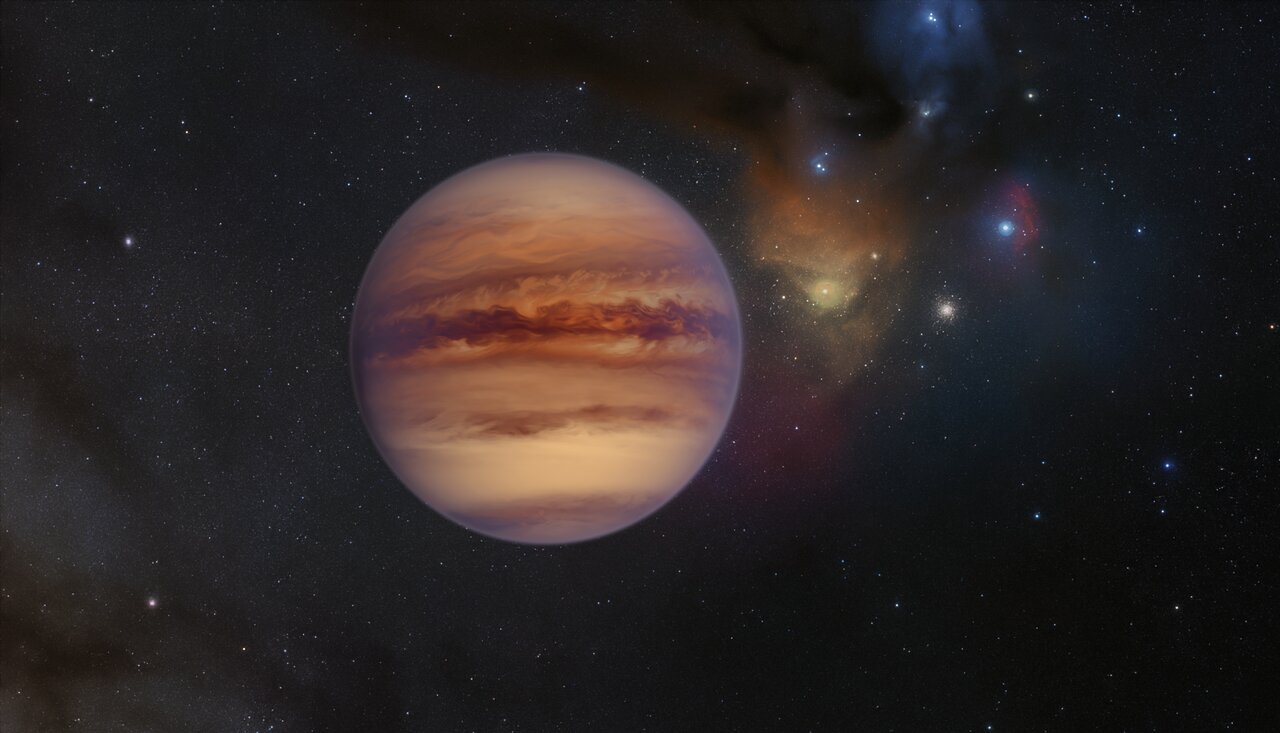 A new study estimates there could be hundreds of rogue planets nearby that we could explore for signs of extraterrestrial life!
The post If Rogue Planets are Everywhere, How Could We Explore Them? appeared first on Universe Today.
A new study estimates there could be hundreds of rogue planets nearby that we could explore for signs of extraterrestrial life!
The post If Rogue Planets are Everywhere, How Could We Explore Them? appeared first on Universe Today.
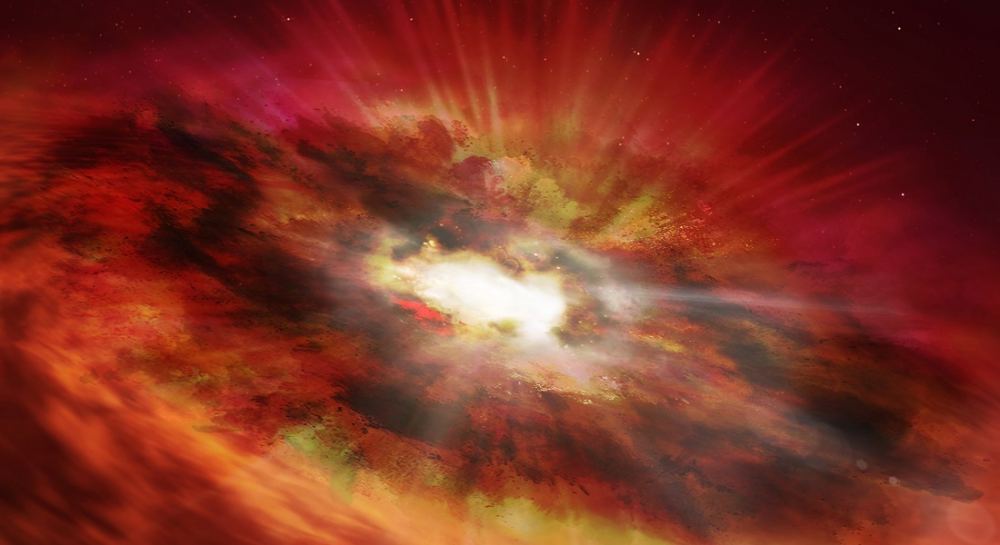 , Skip to content Universe Today Space and astronomy news Menu Videos Newsletter Podcast Contact Us Support Us Log in An international team of astronomers using archival data from the NASA ESA Hubble Space Telescope and other space- and ground-based observatories have discovered a unique object in the distant , early Universe that is a crucial link between young star-forming galaxies and the earliest supermassive black holes . Current theories predict that supermassive black holes begin their lives in the dust-shrouded cores of vigorously star-forming âstarburstâ galaxies . Posted on July 28, 2023 July 28, 2023 by Carolyn Collins Petersen How Did Supermassive Black Holes Grow So Quickly , So Early Supermassive black holes haunt the cores of many galaxies . Yet for all we know about
, Skip to content Universe Today Space and astronomy news Menu Videos Newsletter Podcast Contact Us Support Us Log in An international team of astronomers using archival data from the NASA ESA Hubble Space Telescope and other space- and ground-based observatories have discovered a unique object in the distant , early Universe that is a crucial link between young star-forming galaxies and the earliest supermassive black holes . Current theories predict that supermassive black holes begin their lives in the dust-shrouded cores of vigorously star-forming âstarburstâ galaxies . Posted on July 28, 2023 July 28, 2023 by Carolyn Collins Petersen How Did Supermassive Black Holes Grow So Quickly , So Early Supermassive black holes haunt the cores of many galaxies . Yet for all we know about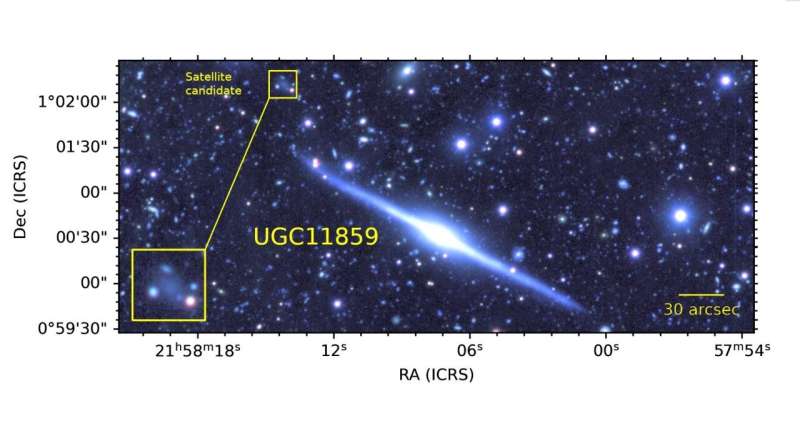 Using the Gran Telescopio Canarias (GTC), astronomers have performed optical imaging observations of an isolated ultra-thin galaxy known as UGC 11859. Results of the observational campaign, published July 12 in The Astrophysical Journal, deliver important insights about the structure and properties of this galaxy.
Using the Gran Telescopio Canarias (GTC), astronomers have performed optical imaging observations of an isolated ultra-thin galaxy known as UGC 11859. Results of the observational campaign, published July 12 in The Astrophysical Journal, deliver important insights about the structure and properties of this galaxy.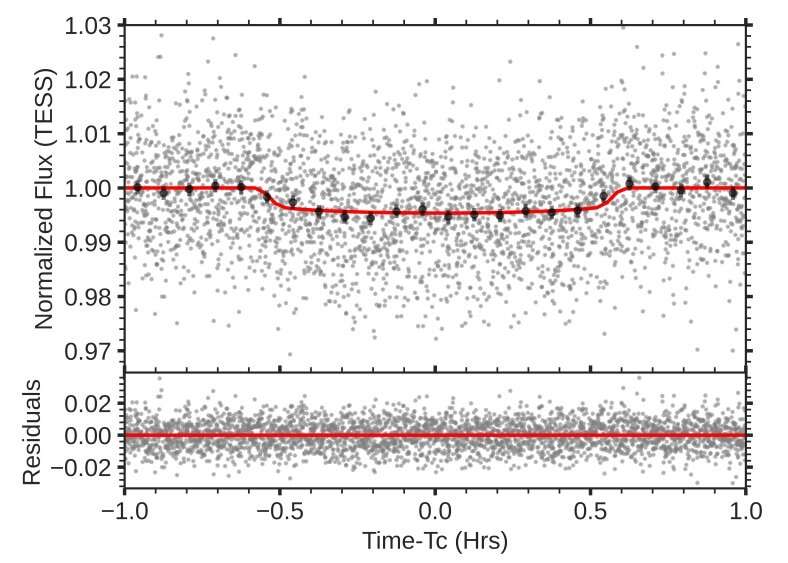 An international team of astronomers reports the discovery of a new "super-Earth" exoplanet with NASA's Transiting Exoplanet Survey Satellite (TESS). The newfound alien world, designated TOI-1680 b, is about 50% larger than the Earth and orbits an M-dwarf star located some 120 light years away. The finding was detailed in a paper published July 11 on the preprint server arXiv.
An international team of astronomers reports the discovery of a new "super-Earth" exoplanet with NASA's Transiting Exoplanet Survey Satellite (TESS). The newfound alien world, designated TOI-1680 b, is about 50% larger than the Earth and orbits an M-dwarf star located some 120 light years away. The finding was detailed in a paper published July 11 on the preprint server arXiv.